Kinosaki Onsen Complete Guide
The Art of Etiquette in a Town-Sized Ryokan
Table of Contents
"The Entire Town is One Ryokan." Welcome to Kinosaki Onsen.
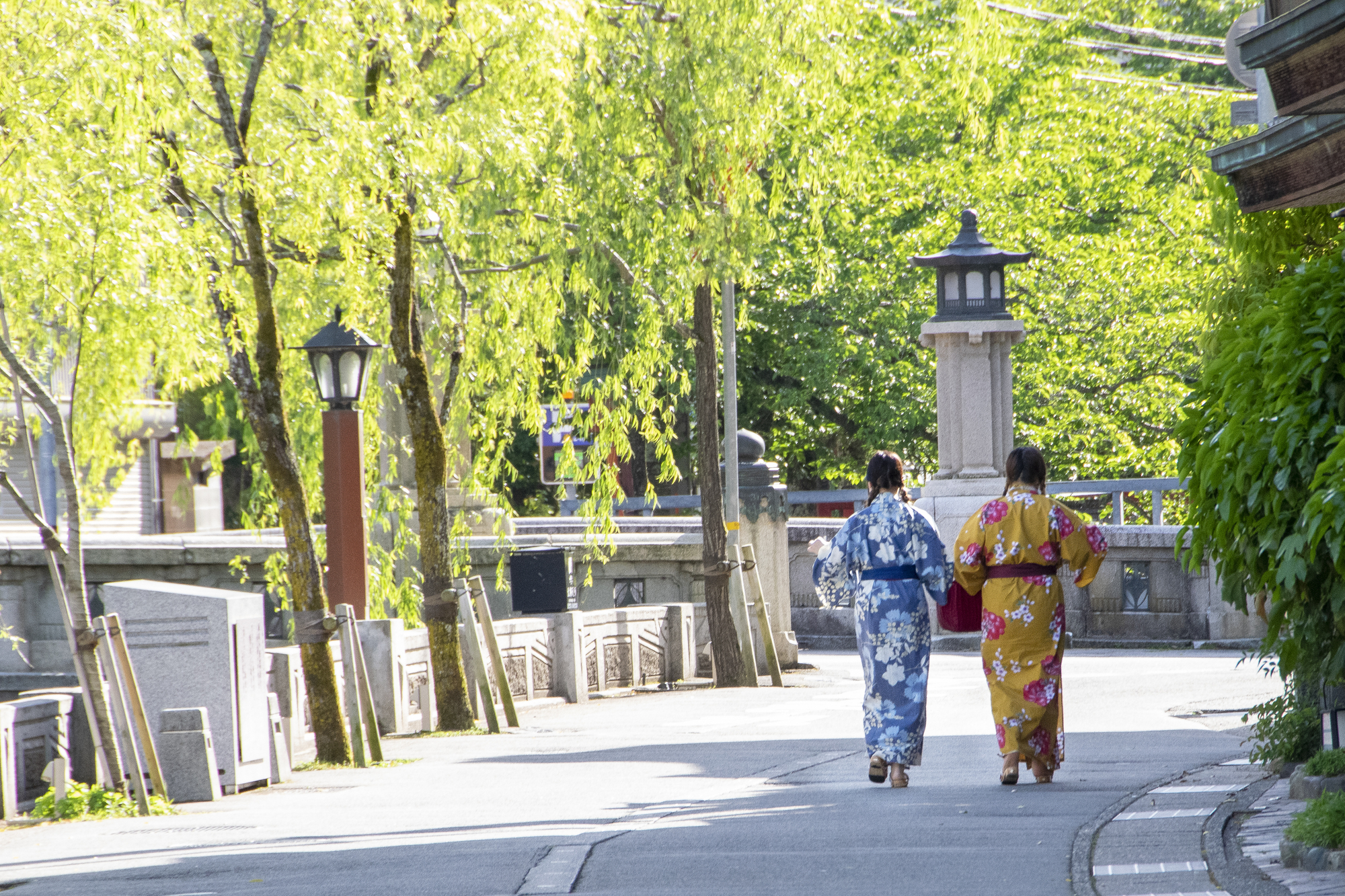
Along a river lined with weeping willows, people in yukata (light cotton kimono) stroll by, the clatter of their geta (wooden clogs) echoing. In their hands, they carry a small basket for "Sotoyu Meguri" – a tour of the seven public bathhouses. This is Kinosaki Onsen, located in the northern part of Hyogo Prefecture. This town has a unique concept unlike any other: "The entire town is one ryokan (Japanese inn)."
In this town, the individual inns are considered "guest rooms," the streets of the onsen town are the "hallways," and the seven scattered public bathhouses are the "grand baths." Guests of the inns wear their yukata, slip on their geta, and freely enjoy onsen-hopping as if they were walking within a single large ryokan.
This guide is here to help you become the best guest of this "giant ryokan." The true charm of Kinosaki Onsen is not just about soaking in the hot springs. It's about participating in the culture of "Sotoyu Meguri" that this town has carefully nurtured, and creating a pleasant sense of unity with other travelers and the townspeople. The manners introduced here are the key to respecting the town's customs and making your own stay a richer, unforgettable experience.
So, let's begin by changing into a yukata at your inn. You too can become a member of the "Kinosaki Ryokan" and start your journey into this wonderful story.
1.A Tale Woven by Authors and Hot Springs: The History and Culture of Kinosaki Onsen
The clatter of geta harmonizes with 1,300 years of history and the echoes of literary masters' thoughts.
1-1. An Ancient Spring with 1,300 Years of History: The Legend of the Stork's Onsen
The history of Kinosaki Onsen dates back to the Nara period. It is said to have begun when a Buddhist monk named Dochi Shonin, after a thousand days of ascetic training to heal the sick, discovered the hot spring gushing forth. There is also a heartwarming legend that the onsen was discovered when a stork with an injured leg was seen healing its wound in the bubbling water, and the town is still known as the "Home of the Oriental White Stork."
1-2. Naoya Shiga and "At Kinosaki": A Town with a Literary Scent
The name of Kinosaki Onsen was immortalized in Japanese literary history by the great author Naoya Shiga. In 1913, he was hit by a train and seriously injured, and he visited this place to recuperate. The short story written based on his experiences and thoughts at that time is the masterpiece "At Kinosaki" (Kinosaki nite). The deep insights into life and death depicted in the work are said to have been brought about by the serene nature and hot springs of Kinosaki. Inns and literary monuments related to him are scattered throughout the onsen town, which still carries a literary fragrance.
1-3. The Establishment of "Sotoyu Meguri" Culture: Why Do People Walk the Streets in Yukata?
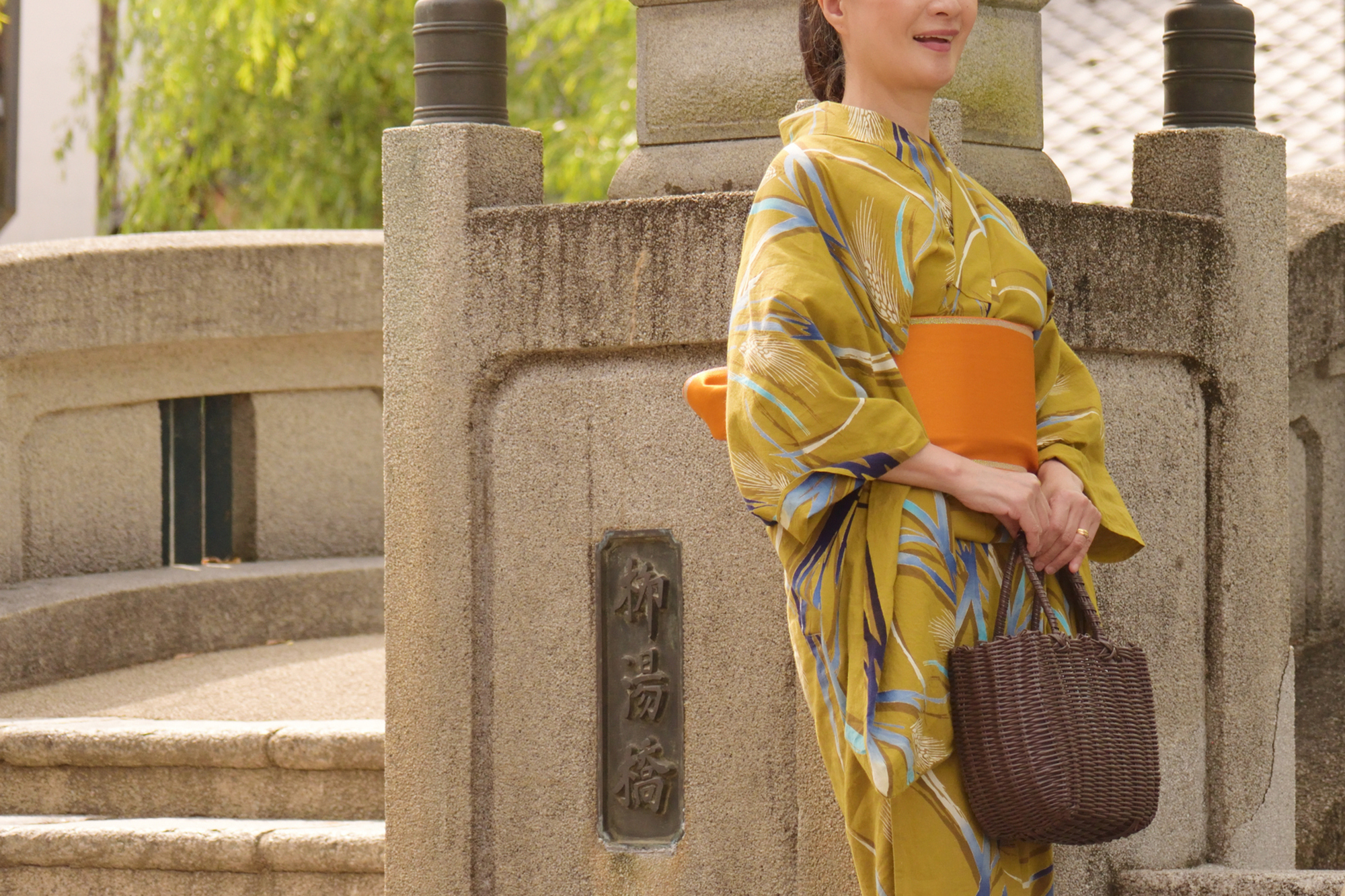
Since the Edo period, Kinosaki Onsen has flourished as a hot spring resort close to the capital city of Kyoto. In those days, most inns did not have private baths, and guests would frequent the public bathhouses (sotoyu). This custom eventually became established as the unique onsen culture of "Sotoyu Meguri." The yukata and geta are the "formal wear" for this onsen-hopping. For an overnight guest to walk in a yukata is a sign that "I am a guest of the Kinosaki Ryokan," and a symbol of being welcomed by the entire town.
1-4. [2025 Update] Evolving Hospitality and a Sustainable Onsen Destination
While preserving its old traditions, Kinosaki Onsen continues to seek new forms of hospitality. In recent years, multilingual digital information boards have been installed for foreign tourists, and new-style cafes and bars run by local young people have increased. Furthermore, efforts are being actively made to become a sustainable tourist destination, such as protecting hot spring resources and reducing plastic waste, and travelers are expected to cooperate as part of the community.
2.Preparations & Basic Info: Enjoying "Sotoyu Meguri" with Style
Let's master how to enjoy the main attraction of Kinosaki Onsen, the "Sotoyu Meguri."
2-1. Complete Access Guide from Osaka/Kyoto
- Limited Express Train (Recommended): From Osaka or Kyoto Station, you can take the JR San'in Main Line Limited Express "Kounotori" or "Kinosaki" directly to Kinosaki Onsen Station without any transfers (approx. 2.5 to 3 hours).
- Express Bus: There are also express buses operated by Zentan Bus from Osaka (Hankyu Sanbangai) to Kinosaki Onsen (approx. 3 hours 10 mins).
- Note: In winter, train delays due to snow are possible, so it's recommended to plan with some extra time.
2-2. Yukata, Geta, and "Yumepa": The Three Sacred Treasures of Kinosaki Onsen
- Yukata and Geta: Most inns provide yukata and geta that can be used from check-in to check-out. Many inns also offer colorful "iro-yukata" for women to rent (may be for a fee).
- Yumepa: This is a digital pass for onsen-hopping that you receive when you stay at a Kinosaki Onsen inn. It has a barcode printed on it, and by simply scanning it at the entrance of each public bathhouse, you can enter for free as many times as you like until check-out. This is a true privilege for overnight guests.
2-3. The Seven Public Bathhouses: Their Features and Virtues
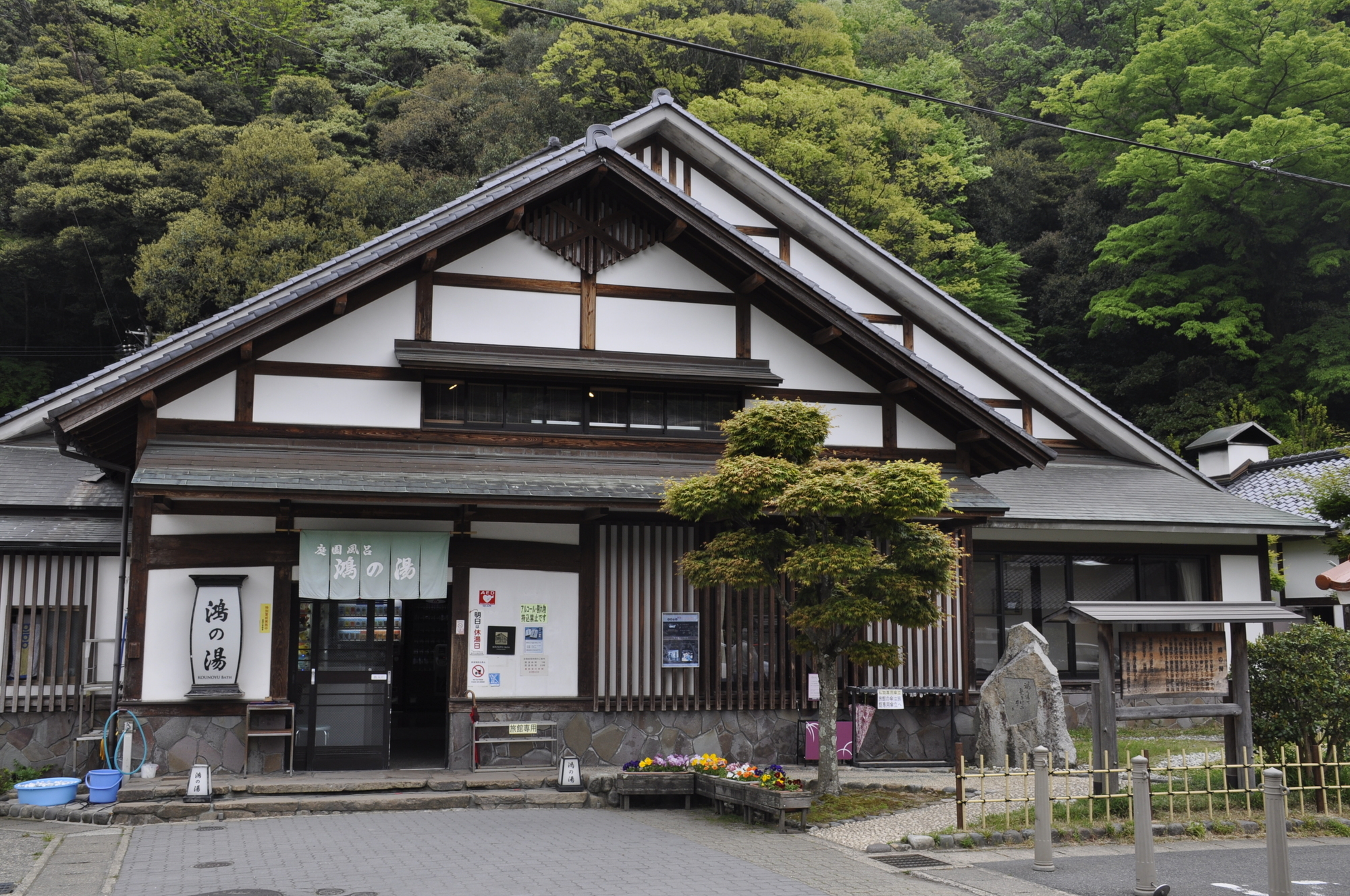
Kinosaki Onsen has seven public bathhouses, each with its own source and atmosphere.
- Sato-no-yu: The largest bathhouse, located in front of the station. Famous for its panoramic open-air bath.(Closed for an extended period from April 1, 2024)
- Jizo-yu: Has a traditional public bath atmosphere. Loved by locals.
- Yanagi-yu: Characterized by its small, deep bathtub. Very atmospheric.
- Ichi-no-yu: Famous for its cave bath. Known as a bath for good fortune.
- Gosho-no-yu: A luxurious building modeled after the Kyoto Imperial Palace. Features an open-air bath with a waterfall view.
- Mandara-yu: A unique bathhouse with a Buddhist theme.
- Kou-no-yu: The oldest and linked to the stork legend.
3.[Crucial] To Be a Gracious Guest of the Onsen Town: 7 Manners to Keep in Kinosaki
Here are the manners for being the best guest of the "Kinosaki Ryokan," and for enjoying and protecting the town's culture.
3-1. The "Sotoyu" are Shared Grand Baths: Don't Linger, and Be Considerate
The seven public bathhouses are the "grand baths" of the ryokan town. However, the tubs are not very large. They can get crowded, especially on weekends. Avoid occupying a spot for a long time and have a "spirit of yielding" so that many people can enjoy them. Soaking for a few minutes and then moving on to the next bathhouse is the stylish way to enjoy it. Cultural Context: The sense of "community" in Japanese sento culture. Japanese sento (public baths) were not just places to wash but also community hubs for local people to interact. It was natural manners to be considerate of each other so that everyone could use the space comfortably. Sotoyu Meguri is based on this spirit. |
3-2. Yukata Etiquette: Wear it Correctly and Behave Accordingly
When wearing a yukata, always wrap the left side over the right side. The reverse, right over left, is how the deceased are dressed, so be absolutely sure not to make this mistake. When you wear a yukata, your demeanor naturally becomes more elegant. Cultural Context: The "hare" feeling that kimono brings and the shift in mindset. When Japanese people wear special attire like a kimono or yukata, which is different from everyday clothes, their mood shifts to "hare" (special/festive), and they feel a sense of straightening their posture. An awareness to behave in a manner befitting the attire arises naturally. |
3-3. The Sound of Geta is Atmosphere, Not Noise: Walk Quietly Along the Willow-Lined Streets
The "karan-koron" sound of geta is part of the charm of Kinosaki Onsen. However, deliberately making loud noises with a large group late at night or early in the morning is just noise. The beauty of the willow-lined streets at night lies in the subtle sound of geta echoing in the quiet. Cultural Context: The Japanese aesthetic of valuing "Ma" (interval) and "Yoin" (reverberation). In Japanese arts and music, the "ma" between sounds and the "yoin" after a sound has faded are very important. The same applies to the nights in Kinosaki. Deep charm is found not only in liveliness but also in the contrast with quiet moments. |
3-4. Don't Enter the Dressing Room Wet: Effective Use of a Small Towel
When onsen-hopping, you carry a small towel (tenugui). Before leaving the bathing area to the dressing room, use this towel to wipe your body thoroughly. Not getting the dressing room floor wet is an important consideration for the next person. Cultural Context: The value of "cleanliness" born from consideration for others. In Japanese society, "cleanliness" holds a very high value. And this cleanliness is maintained not only by individual effort but also by mutual consideration to "not make others uncomfortable." |
3-5. Photos for Memories Only: Privacy Considerations and Photography Manners
The onsen town with many people in yukata is a great subject for photos, but when photographing people, always ask for permission or be considerate not to make them identifiable. Also, photography is strictly prohibited at the entrance of, in the dressing rooms of, and inside the public bathhouses. Cultural Context: Portrait rights and the unwritten rule of "not causing trouble." In Japan, not causing trouble for others is a fundamental principle of social life. Photographing people without permission is an invasion of privacy and is recognized as a "meiwaku-koi" (a troublesome act) that makes others uncomfortable. |
3-6. The Winter King, "Matsuba-gani" Crab: Dining Etiquette for Eating Beautifully and with Gratitude
Winter in Kinosaki Onsen is the season for the top-grade "Matsuba-gani" (snow crab). The crab dishes served at ryokans are true works of art. If you're not sure how to eat them, don't hesitate to ask the ryokan staff. Eating it cleanly and completely is an expression of gratitude for the life of the crab and to the chef. Cultural Context: Gratitude for seasonal ingredients and the virtue of eating cleanly. In Japanese cuisine, enjoying seasonal ingredients is synonymous with being thankful for the blessings of the season. And eating the food completely without waste is considered a virtue of not wasting the life that was given. |
3-7. Don't Dirty the Town's "Hallways": Manners for Street Food and Trash
The onsen town has attractive street food perfect for after a bath, like onsen-tamago (soft-boiled eggs) and soft-serve ice cream. However, "the streets are the ryokan's hallways." Be careful not to litter or make a mess with spills. The basic rule is to return trash to the shop where you bought the food or take it with you. Cultural Context: The visitor's responsibility in response to "omotenashi" (hospitality). In response to Kinosaki's stance of welcoming travelers as a whole town, visitors also have a responsibility not to defile the space of that hospitality. This mutual respect creates a wonderful atmosphere. |
4-1. A Stroll Full of Onsen Town Charm: Arch Bridges, Willow-Lined Streets, and Literary Monuments
The Otani River flows through the center of the onsen town, with several arch bridges and willow-lined streets creating a scenic landscape. Looking for the literary monuments of authors like Naoya Shiga during your walk is a unique pleasure of this town.
4-2. Kinosaki Ropeway: A Superb View from the Summit and Onsenji Temple
4-3. A Full Course of Winter Delicacies: Crab Sashimi, Grilled Crab, and Crab Hot Pot
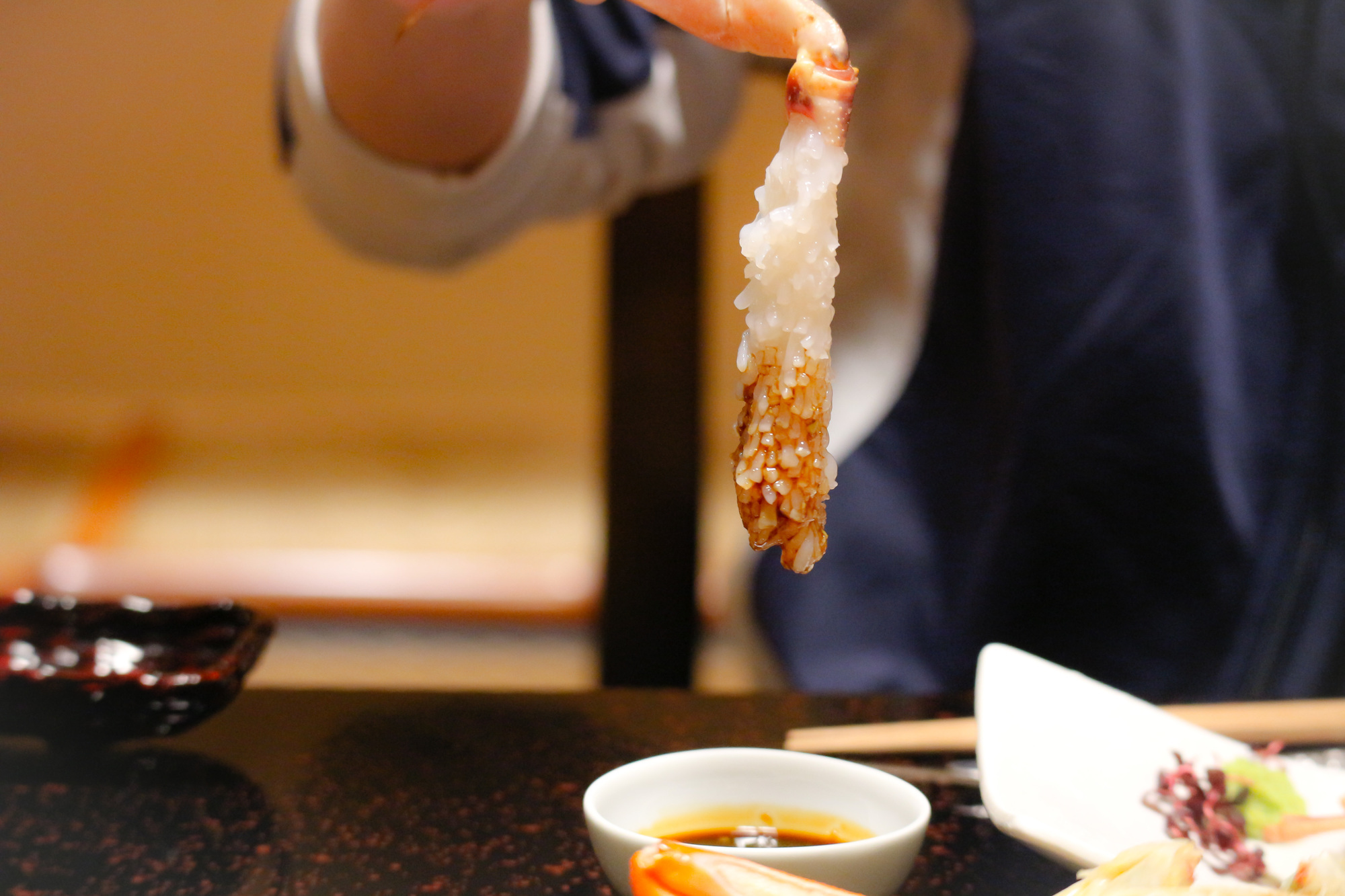
If you stay in Kinosaki Onsen in winter, you must try a full course of Matsuba-gani crab. The melt-in-your-mouth sweet crab sashimi, the fragrant grilled crab, and the "kani-suki" (crab hot pot) in a broth rich with crab umami. Finishing with "zosui" (a rice porridge made with the leftover broth) is the classic way to end the meal.
5.Planning Your Trip: Model Itineraries to Immerse Yourself in the Story
5-1. [Day Trip] Casual Onsen-Hopping! A Kinosaki Onsen Highlights Course
- Morning: Arrive at Kinosaki Onsen Station. First, enjoy one or two of your desired public bathhouses.
- Noon: Have lunch in the onsen town, such as a seafood bowl or Tajima beef.
- Afternoon: Stroll along the willow-lined streets and look for souvenirs. If time permits, take the ropeway to the summit.
- Evening: Before heading home, enjoy a final soak at Jizo-yu or Goshono-yu, both located near the station.
5-2. [1 Night, 2 Days] Literature, Onsen, and Crab! The Ultimate Kinosaki Experience Course
- Day 1:
〇Around 15:00: Check into your ryokan, receive your "Yumepa," and change into a yukata.
〇Until Evening: Immediately start onsen-hopping. Visit 3-4 public bathhouses.
〇Night: Savor a full course of Matsuba-gani crab at the ryokan. After dinner, stroll through the onsen town at night again. Walk along the illuminated willow-lined streets.
- Day 2:
〇Morning: Enjoy a morning bath before breakfast. Go to a different public bathhouse from the previous day.
〇Forenoon: After checking out, leave your luggage and take the ropeway to Onsenji Temple and the summit. Visit literary monuments of Naoya Shiga and others.
〇Noon: Have a light lunch near the station and head home.
The Sense of Unity with the Town to Take Home
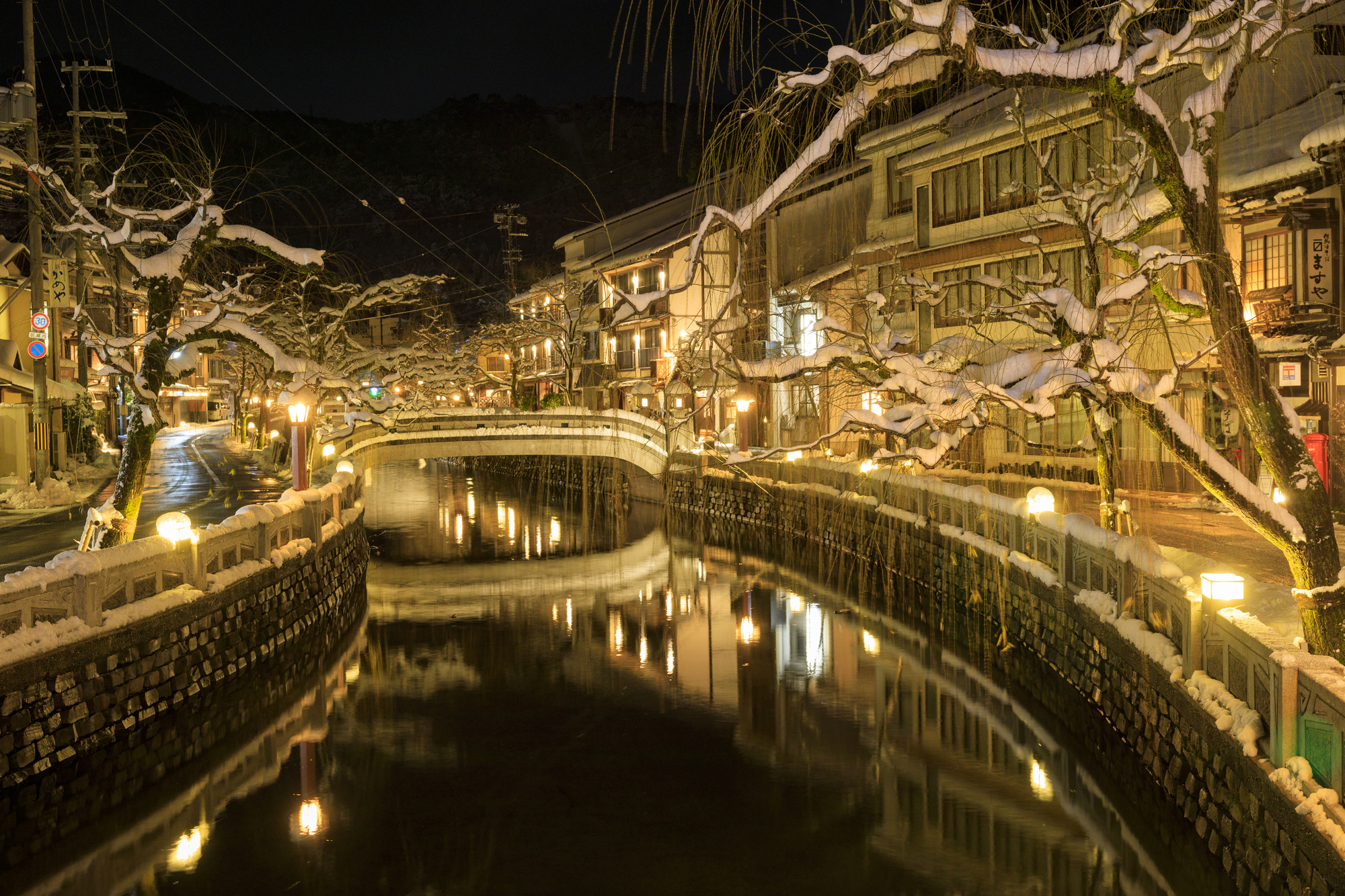
When you finish your trip to Kinosaki Onsen and return to your daily life, you might suddenly remember. The comfort of walking under the willow trees in a yukata, the light sound of geta, and the feeling of the night breeze on your warm body after a bath.
These memories are proof that you were not just a bystander, but that you participated in the culture of this "town-sized ryokan" and became a part of it. The best souvenir you can take home is this pleasant sense of unity with the town. Once you know that feeling, you will surely want to come back to this grand ryokan and say, "I'm home."

